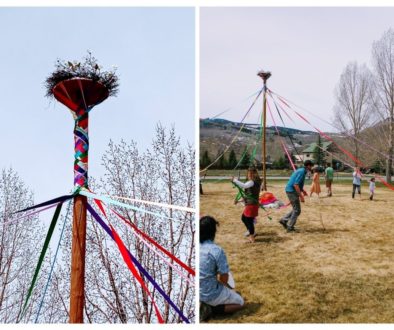Multiage Classrooms
Multiage Classrooms
McLoughlin (1967) argued that graded schools had always shared one common flaw,
“They attempted to fit the child to the curriculum and never the curriculum to the child.”
“How can you possibly teach a group of kids more than one level at a time?”
“Will my younger child be learning bad habits from older children?”
“Will the curriculum be complete if the teacher has to juggle so much at one time?”
What exactly is a multiage classroom?
Typically, multiage classrooms are composed of students who are more than one year apart. They remain with the same teacher for more than one year and consist of a mix of abilities and ages. Multiage classrooms reflect the natural groupings found in our neighborhoods, communities, and the world. They provide opportunities for exchanging ideas, modeling behaviors, the practice of responsibility and nurturance, and the development of leadership and social skills.
Many parents overlook that single-age classrooms are relatively new in our history, emerging in the 1800s, and taking ground as ‘normal’ in the mid-1900s. These classrooms certainly have their advantages; otherwise, they would not exist, nor would they continue to serve some very real needs.
So why are multiage classrooms making a comeback?

As a teacher in a Montessori classroom and as an observer at both the ‘New International School’ in Tokyo and ‘Roots School’ in Maui, I have seen the following: Students learn at their own pace, thrive in an atmosphere dedicated to their needs, are viewed as an exclusive individual rather than grouped within a classroom of “age-appropriate” teachings, and have increased confidence.
According to research, children benefit in many ways from multiage classrooms (Miller 1990). Academically, children usually do better in multiage classrooms in traditional classrooms (Anderson & Pavan, 1993). If they don’t do better, then they do the same. Multiage classrooms do not negatively affect academic achievement (Miller, 1990). After reviewing twenty-one quantitative studies comparing the effects of multiage classrooms with single-grade classrooms, Miller (1990, 6) notes, “In terms of academic achievement, the data clearly support the multigrade classroom as a viable and equally effective organizational alternative to single-grade instruction.”
But, back to the main differences:
Students are not held to a strict curriculum that may be too advanced or too beneath them in learning. This, of course, varies depending on the pedagogy of the school. It is particularly true for Montessori schools. It is slightly less the case for schools that loop core lessons such as history and science.
Younger children form a trust, leading to endless opportunities when in a relaxed and safe environment. Older children take on leadership roles and, when not forced, develop a mentorship that helps to grow their life skills while still learning at an appropriate level.

Typically, each child focuses on their solitary strengths, and educators consistently monitor the students’ needs and move forward with in-depth and complex open-ended activities.
And, not necessarily final, children in multiage classes gain a sense of ownership with each achievement. There is a minimal comparison with their peers because of their individual learning schedules, therefore creating a space of continued accomplishment.



